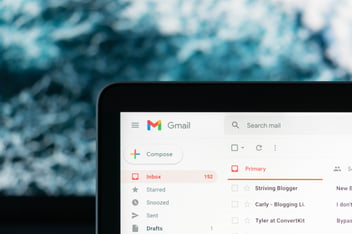A Radical Idea to Build Radical Customer Loyalty
We spend the first months of every year building out our grand plans and schemes for all of the amazing things we'll do for our customers.
Good luck with that. Customers are spoiled, and it’s impossible to keep up with those expectations, but you deserve credit for going for it.
The biggest hinderance to your success probably isn't your customers, however.
It's your own executives.
They're the ones who prioritize new business over engagement.
They're the ones who get to announce major deals to shareholders.
They're the ones popping champagne when the company hits those revenue goals.
You know what they don't: retained customers are more profitable than new ones.
It's time to be bold and take decisive action.
Radical times call for radical actions. Here’s a radical suggestion you can take to your management: cease all new business development operations, and send that investment into customer retention!
Could an organization truly hit pause on pursuing new customers, and shift the focus entirely to maintaining the needs of existing clientele?
The gut instinct for most is no way, absolutely not. New business is the lifeblood of most organizations, or at least the most obvious measure of success. Retaining 80% of your customers will earn a few golf claps from the crowd, but increasing new business by 80% will earn you a statue in the lobby.
Fine, no organization is going to truly abandon business development. But what if even a portion of that focus was turned toward engaging existing customers? Instead of buying lead lists or ad placements, a company could build engagement and engender responsiveness from a customer base. What if your sales team focused more on maximizing customer usage and satisfaction than they do on cold calling and prospecting? How would that affect profitability?
Loyalty is More Profitable
Money talks, and new, found money sings. In a myopic society, in which many of our executives come from the “eat what you kill” world of sales, new business is what appears to be the most profitable.
It’s not.
Loyal customers are more profitable. They spend more, and spend more frequently. They’re more forgiving when a brand goofs up. They’re more willing to refer a brand to friends. They create dialog on what the brand should do next. Some will even regulate your online community and protect the brand from detractors, on their own free accord.
Meeting ridiculous customer expectations requires a laser focus on their needs, and constantly exceeding their expectations. It’s an ongoing, evolving commitment, but eventually you’ll have an expanding core of customers who will come back to your brand every time.
Keep it up, and that loyal base will become a new business generator all its own, as referrals and continued upsales will build profitability in the same manner they did before.
When you have that kind of engine built, then you throw on a layer of traditional business development that pursues more of those ideal customers, that’s how brands become icons.
Don’t Just Accept Churn
Much of the issue causing the gap between expectations and performance has to do with turning a blind eye to churn, or at least an unwillingness to take the right steps to stem churn.
Churn has long been accepted, but no one is sure why. Some customers will just leave, even if they’re satisfied. Millennials in particular seem to be into change for change’s sake, according to some data.
Don’t fall into the trap of just accepting churn. Not every customer has a reason to leave, but not every customer is truly given a reason to stay.
Customer loyalty comes from many different directions. Employee engagement plays a huge role, as does branding, community involvement, responsiveness, and everything else that encompasses the “experience.” It can also be engendered through loyalty programs, incentives, rewards, member benefits, gifts, even coupons can play an important role in bringing customers back repeatedly.
It boils down to knowing your ideal customer and what makes them tick. If you listen to them, they’ll tell you exactly what it takes to earn their loyalty. The rest is up to you and what level of investment you want to make.
We can’t convince you to give up the entire business development budget, and in all reality, you shouldn’t.
We can only hope encourage you to shift some of that investment - and the same organizational excitement and enthusiasm - into building relationship building and customer loyalty. If long term profitability is your thing, a healthy dose of both is the only option.
Topics: customer loyalty
Written by: Brandon Carter






.jpeg)







Share your Comment.